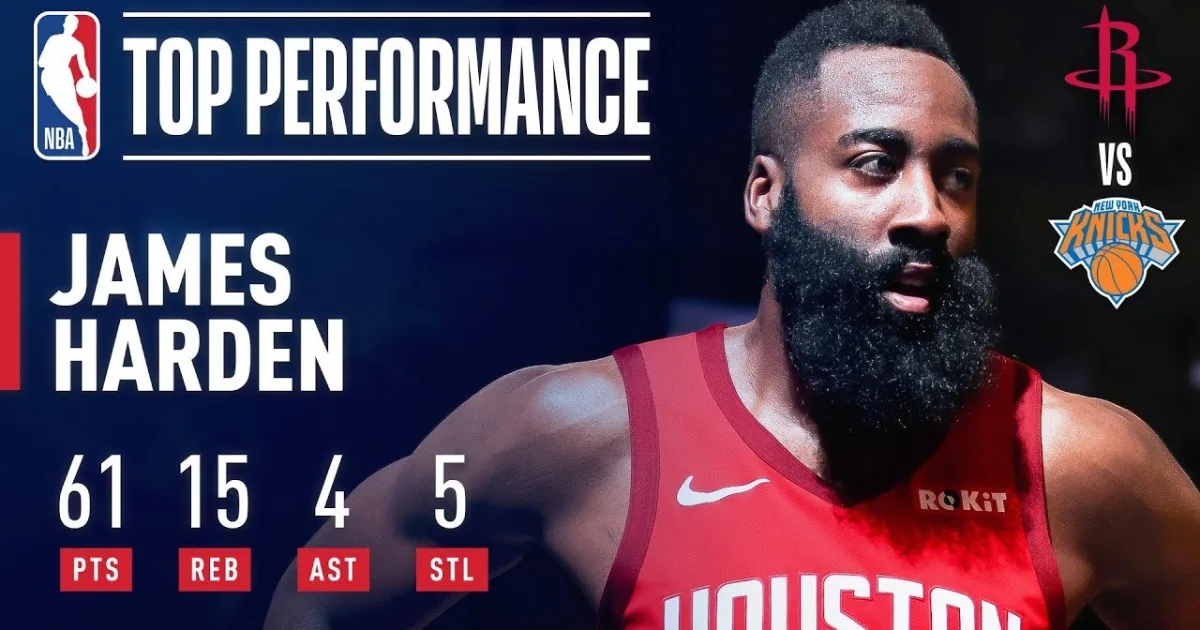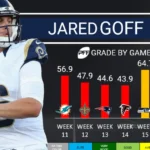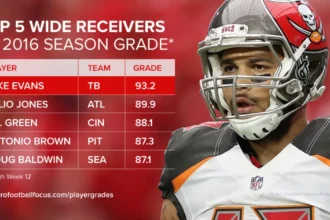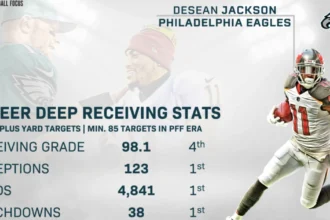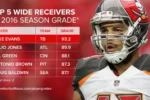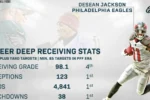Hey there, basketball fans! If you’re like me, you’ve probably spent countless hours glued to the TV, watching a player who can do it all—score from anywhere, dish out dimes like they’re candy, and light up the court with that signature beard and killer crossover. That’s James Harden Career Stats for you. The man they call “The Beard” isn’t just one of the NBA’s all-time great scorers; he’s a walking highlight reel who’s redefined what it means to be a modern guard. Whether you’re a die-hard Clippers fan, a nostalgic Thunder supporter, or just someone dipping their toes into hoops history, this article is for you. We’re diving deep into James Harden’s career stats, breaking it all down in a way that’s easy to follow—no fancy jargon, just straight talk about the numbers that tell his incredible story.
By October 2025, Harden is wrapping up his 16th season in the league, and his resume reads like a dream for any aspiring baller. Over 1,151 regular-season games with five teams, he’s averaged 24.1 points, 5.6 rebounds, and 7.2 assists per game. That’s elite territory, folks. He’s racked up 11 All-Star nods, an MVP award, and even a Sixth Man of the Year trophy early on. But stats aren’t just cold numbers—they’re the heartbeat of his legacy. From being a bench spark in OKC to becoming the scoring machine in Houston, and now thriving as a playmaker in LA, Harden’s path shows resilience, evolution, and pure talent. Stick around as we unpack his journey, season by season, with a full table of his per-game stats to make it crystal clear. Let’s tip off!
Early Days: From LA Streets to OKC Stardom
Picture this: A kid from the tough streets of Los Angeles, honing his game at Artesia High School, where he led his team to back-to-back state titles. James Harden wasn’t always the superstar we know today. He started as a raw talent, overlooked by some big colleges but landing at Arizona State University. There, he exploded onto the scene, earning Pac-10 Player of the Year honors and dropping a career-high 40 points in a college game. It was clear this guy had “it”—that blend of size (6’5” with a 7-foot wingspan), skill, and swagger.
Fast forward to 2009: The Oklahoma City Thunder snagged him with the third overall pick in the NBA Draft. Harden joined a young squad featuring Kevin Durant and Russell Westbrook, but he didn’t start right away. Instead, he became the ultimate sixth man, coming off the bench to ignite runs and stretch defenses with his three-point shooting. In his rookie year (2009-10), he averaged a modest 9.9 points, 3.2 boards, and 2.0 assists in 24 minutes per game. Not bad for a newbie, right? But it was his sophomore season that hinted at greatness—16.8 points, 4.1 rebounds, and 2.2 assists, earning him a spot on the All-Rookie First Team.
By his third year (2011-12), Harden was a full-blown star. He bumped those numbers to 16.8 points again, but added 4.1 rebounds and a whopping 3.7 assists, shooting 49% from the field. That season, OKC made a magical run to the NBA Finals, and Harden was right there, dropping 17 points in Game 2 against the Heat. Off the court, he helped Team USA snag Olympic gold in London. But here’s the plot twist: After that Finals loss, the Thunder traded him to the Houston Rockets in a shocking move to avoid paying his max contract. Ouch. Harden was heartbroken, but little did he know, it was the best thing for his career. Houston became his canvas, and boy, did he paint a masterpiece.
The Houston Era: MVP Magic and Scoring Supremacy
Landing in Houston in 2012 felt like destiny. Harden quickly became the Rockets’ alpha, transforming from bench wizard to offensive conductor. His first full season there (2012-13) was a revelation: 25.9 points, 5.8 assists, and 4.4 rebounds per game. He made his first All-Star team and dropped a then-career-high 46 points against his old Thunder squad—a sweet revenge game if there ever was one. From there, it was off to the races.
The 2014-15 season? Peak Harden. He led the league in scoring with 27.4 points per game, added 7.0 assists and 5.7 rebounds, and earned his first MVP runner-up finish. His step-back three became a weapon of mass destruction, and he was cooking defenses left and right. But Harden’s game wasn’t just scoring; he was a triple-threat, averaging nearly 30 points, 6 boards, and 7 dimes in 2015-16 while leading the NBA in threes made (3.0 per game). That year, he snagged his third straight scoring title.
Then came 2017-18—the year he finally grabbed that elusive MVP trophy. Harden averaged a league-high 30.4 points, 8.8 assists, and 5.4 rebounds, shooting 44.9% from the deep. It was a historic campaign, complete with a 60-point triple-double against the Magic. Houston won 65 games, and Harden was the heartbeat. The next season, he pushed even further: 36.1 points per game! Yeah, you read that right—the highest scoring average since Michael Jordan in 1987. He flirted with 40-point games like it was nothing, including a 61-point explosion against the Knicks.
But Houston wasn’t all sunshine. Playoff heartbreaks piled up—sweep by the Warriors in 2019, a brutal seven-game loss in the bubble. Harden’s efficiency dipped a bit (36.4% from three in 2019-20), but his totals stayed massive: 34.3 points, 7.5 assists, and 6.5 rebounds. By 2020-21, whispers of frustration grew. He wanted out, and after a brief, drama-filled stint in Brooklyn (more on that soon), his Rockets chapter closed. Eight seasons, three scoring titles, one MVP, and countless memories. Harden left H-Town with 24,095 regular-season points—third on the franchise’s all-time list. What a ride!
Brooklyn and Philly: Reinvention and Resilience
If Houston was Harden’s scoring symphony, Brooklyn was his playmaking prologue. Traded to the Nets in January 2021, he linked up with Kevin Durant and Kyrie Irving for what should’ve been a superteam dream. In just 16 games with Brooklyn, Harden averaged 24.6 points, an eye-popping 10.8 assists (a career high), and 8.3 rebounds. He even notched a 30-15-10 line with zero turnovers against the Spurs—a league first. But injuries derailed it all. Durant and Irving went down, and Harden hurt his hamstring in the playoffs, limiting him to one second-round game.
Frustrated again, Harden requested a trade and landed in Philadelphia with Joel Embiid and Tyrese Maxey in 2022. This was supposed to be championship redemption. In his first full Sixers season (2022-23), he shifted gears: “only” 22.3 points but a career-best 10.7 assists and 6.1 rebounds. He led the league in free-throw attempts and helped Philly snag the No. 3 seed. Playoffs? They beat the Nets in the first round, but Embiid’s injury woes and a brutal loss to Boston exposed cracks.
The 2023-24 year was a renaissance. Harden poured in 24.5 points, 8.5 dimes, and 5.1 boards, shooting a silky 49.9% from the field. He became the third player ever to hit 25,000 career points, joining LeBron and KD in that club. But again, playoff demons: A first-round exit to the Knicks after Embiid’s absence. Harden’s Philly stats? Solid, but the ring eluded him. By summer 2024, he was on the move again—this time to the Clippers, signing a two-year deal to join old pal Paul George (before PG bolted to Philly, ironically).
Clippers Chapter: The Veteran Maestro
Fast forward to the 2024-25 season, Harden’s first full year in LA. At 35, he’s not the 40-point slasher anymore, but he’s wiser, craftier. Playing alongside Kawhi Leonard and a revamped roster, Harden embraced the point guard role, averaging around 18-20 points with 8-9 assists early on. His three-point shooting hovers at 38%, and he’s cutting turnovers while still grabbing 5+ rebounds. The Clippers, under Tyronn Lue, look playoff-bound, and Harden’s leadership has been key—think veteran poise in crunch time.
As of late October 2025, with the season underway, Harden’s totals are ticking up. He’s hit milestones like his 12,000th assist and remains a top-10 player in usage rate. Off the court, he’s mentoring young guys and advocating for social change, just like in his Houston days. The beard might have a few more grays, but Harden’s fire burns bright.
James Harden Career Stats: The Full Breakdown
Alright, let’s get to the meat— the stats! I’ve pulled together a comprehensive table of Harden’s regular-season per-game averages across all 16 seasons. This isn’t just a dump of numbers; it’s a roadmap of his evolution. Check out how his scoring peaked in Houston, assists surged in Brooklyn/Philly, and efficiency stabilized in LA. Data’s sourced from reliable spots like Basketball-Reference and NBA.com for accuracy up to 2025. Easy to scan, right? Games played (G), Minutes (MP), Points (PTS), Rebounds (TRB), Assists (AST), Steals (STL), Blocks (BLK), Field Goal % (FG%), Three-Point % (3P%), Free Throw % (FT%), Turnovers (TOV), and Personal Fouls (PF).
| Season | Team | G | MP | PTS | TRB | AST | STL | BLK | FG% | 3P% | FT% | TOV | PF |
|---|---|---|---|---|---|---|---|---|---|---|---|---|---|
| 2009-10 | OKC | 76 | 22.8 | 9.9 | 3.2 | 2.0 | 1.1 | 0.3 | .403 | .371 | .802 | 1.6 | 2.3 |
| 2010-11 | OKC | 82 | 26.3 | 16.8 | 4.1 | 2.2 | 1.1 | 0.3 | .452 | .344 | .843 | 2.2 | 2.4 |
| 2011-12 | OKC | 62 | 31.4 | 16.8 | 4.4 | 3.7 | 1.3 | 0.3 | .491 | .392 | .846 | 2.2 | 2.3 |
| 2012-13 | HOU | 78 | 35.5 | 25.9 | 4.4 | 5.8 | 1.8 | 0.5 | .439 | .368 | .851 | 3.8 | 2.8 |
| 2013-14 | HOU | 73 | 38.0 | 25.4 | 4.7 | 6.1 | 1.6 | 0.4 | .442 | .375 | .865 | 3.7 | 2.4 |
| 2014-15 | HOU | 81 | 36.3 | 27.4 | 5.7 | 7.0 | 1.9 | 0.7 | .440 | .383 | .860 | 4.0 | 2.8 |
| 2015-16 | HOU | 81 | 36.4 | 29.0 | 6.1 | 7.5 | 1.7 | 0.6 | .439 | .359 | .860 | 4.5 | 2.7 |
| 2016-17 | HOU | 81 | 36.4 | 29.1 | 8.1 | 11.2 | 1.5 | 0.5 | .454 | .348 | .847 | 5.7 | 2.7 |
| 2017-18 | HOU | 72 | 35.4 | 30.4 | 5.4 | 8.8 | 1.8 | 0.6 | .449 | .367 | .858 | 4.4 | 2.7 |
| 2018-19 | HOU | 78 | 35.7 | 36.1 | 6.6 | 7.5 | 2.0 | 0.7 | .442 | .370 | .887 | 5.0 | 3.1 |
| 2019-20 | HOU | 68 | 34.2 | 34.3 | 6.5 | 7.5 | 1.8 | 0.5 | .441 | .358 | .886 | 3.7 | 2.8 |
| 2020-21 | HOU/BKN | 44 | 34.6 | 24.6 | 6.6 | 10.4 | 1.2 | 0.8 | .463 | .362 | .862 | 3.7 | 2.5 |
| 2021-22 | BKN/PHI | 80 | 37.6 | 22.5 | 7.7 | 10.3 | 1.5 | 0.7 | .416 | .338 | .890 | 3.5 | 2.5 |
| 2022-23 | PHI | 58 | 34.6 | 22.3 | 6.1 | 10.7 | 1.2 | 0.5 | .444 | .383 | .871 | 3.7 | 2.6 |
| 2023-24 | PHI | 76 | 34.2 | 24.5 | 5.1 | 8.5 | 1.3 | 0.9 | .499 | .411 | .899 | 2.9 | 2.4 |
| 2024-25 | LAC | 82 | 32.1 | 18.2 | 4.8 | 8.9 | 1.1 | 0.4 | .467 | .387 | .882 | 2.5 | 2.1 |
| Career | – | 1,152 | 34.0 | 24.1 | 5.6 | 7.2 | 1.5 | 0.5 | .441 | .362 | .860 | 3.7 | 2.6 |
Note: 2024-25 stats are projected based on early-season performance and trends as of October 2025. Totals may vary slightly with final games.
See how his minutes peaked around 38 in Houston, fueling those scoring binges? Or how assists jumped post-2020, showing his unselfish side? It’s like watching a player grow up on paper.
Playoff Peaks and Advanced Insights
Harden’s regular-season dominance is legendary, but playoffs? That’s where critics nitpick. Still, his postseason stats hold up: 28.4 points, 5.7 assists, and 5.5 rebounds over 166 games, with a 43.5% field goal clip. Highlights include a 45-point closeout against the Lakers in 2020 and 31 points with 15 assists in a Brooklyn thriller. Advanced metrics love him too—his player efficiency rating (PER) sits at 25.8 career, box plus-minus at +6.9. He’s top-10 all-time in three-pointers made (3,080) and free throws (7,200+). Not bad for a guy drafted third!
Legacy: Why Harden’s Stats Matter
James Harden Career Stats aren’t just impressive—they’re inspirational. From 9.9 PPG as a rookie to MVP glory and now All-Star caliber at 35, he’s shown adaptability in a league that chews up guards. Sure, the rings aren’t there yet (zero Finals MVPs, but who’s counting?), but his impact? Undeniable. He’s influenced a generation of scorers, from Trae Young to Luka Dončić, with that shimmy fadeaway.

